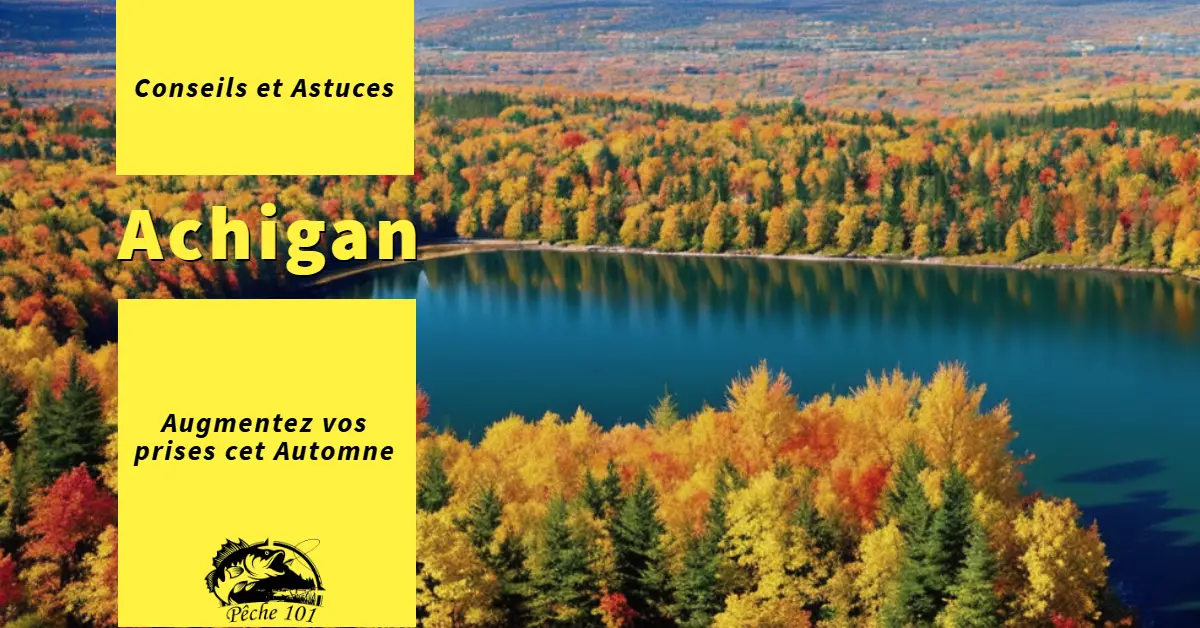Bass fishing in autumn is a popular activity for both amateur and professional anglers.
This is a period when largemouth and smallmouth bass change their behavior and adopt a different feeding strategy.
They congregate mainly on shoals, near seagrass beds and large rocks in shallow water.
Autumn offers unique opportunities for fishing enthusiasts looking for an interesting challenge and potentially some impressive catches.
For successful bass fishing (black perch) in autumn, it's important to understand the specific behaviours of largemouth and smallmouth bass during this season.
In addition to choosing the right lures and tackle, anglers must also consider the impact of wind on fall bass fishing, as well as surrounding structure and vegetation.
Article content
- 1 Autumn Bass Fishing: Why And How
- 2 The Best Fall Bass Fishing Lures
- 3 The Impact of Wind on Fall Bass Fishing
- 4 Fall Bass Fishing Techniques
- 5 Understanding Fall Bass Behavior
- 6 Choosing the Right Bass Fishing Equipment
- 7 Where to Fish for Largemouth Bass and Smallmouth Bass in Autumn
- 8 Bass Fishing Fall Versus Winter
- 9 Autumn Bass Fishing: The Role of Structure and Vegetation
- 10 Frequently asked questions
- 10.1 What are the best techniques for catching bass in autumn?
- 10.2 Which lures work best for bass in autumn?
- 10.3 Where to find fall bass fishing?
- 10.4 How to adapt your fishing strategy for autumn?
- 10.5 What's the best time of day to fish for bass in autumn?
- 10.6 What are the signs of a good fall fishing area?
- 11 Author
Key points
- Adapt your fishing techniques to the specific behaviour of bass in autumn.
- Choose the right lures and tackle to increase your chances of success.
- Take wind, structure and vegetation into account to maximize results when bass fishing in autumn.
Autumn Bass Fishing: Why And How
Bass prepare for winter by gathering and feeding intensively to store energy. This makes it easier for fishermen to locate and catch them.
The key to successful bass fishing in autumn is to adapt your fishing techniques. In particular, focus on areas where bass congregate, such as shoals, weed beds and large rocks in shallow water.
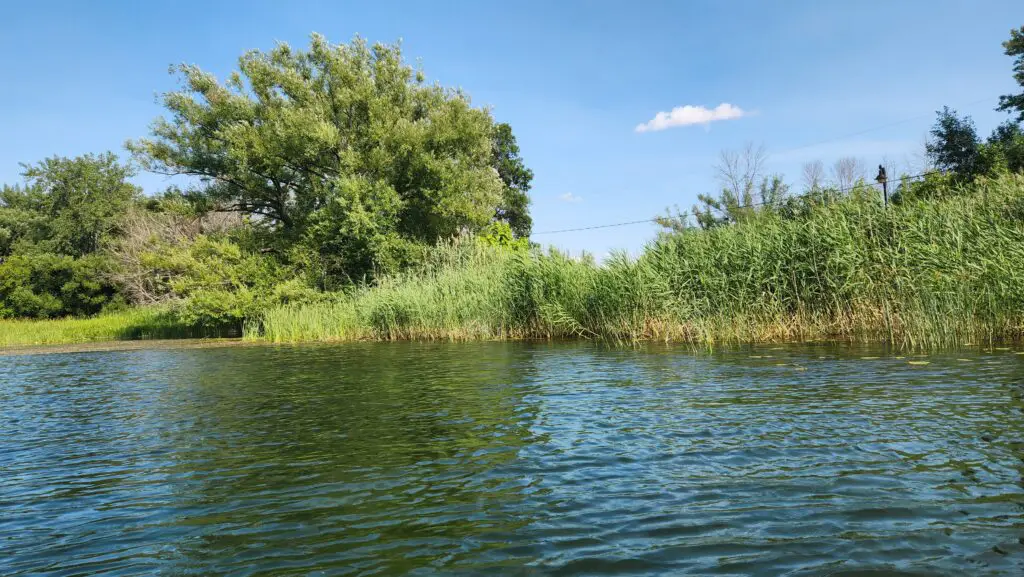
This period is ideal for a variety of fishing techniques, such as light casting, heavy "bait caster" or fly fishing.
It's important to become familiar with bass behaviour in autumn. The fish become more aggressive, which can result in vigorous fighting when hooked.
Taking these characteristics into account allows you to adapt your fishing strategy and anticipate fish reactions.
Bass fishing in autumn is a rewarding and exciting experience for anglers of all levels.
By learning about fish behaviour and adapting your fishing techniques, you can make some great catches and enjoy unforgettable moments on the water.
The Best Fall Bass Fishing Lures
The right lures significantly increase your chances of success. Here are some of the best lures to consider when bass fishing in autumn:
Jig lure : Jigs are effective lures for bass fishing because of their versatility. They can be used in different environments and at different depths.
Senko The Senko lure is very productive in autumn. Bass find this lure particularly attractive and are often seduced by its action and the movement it generates.
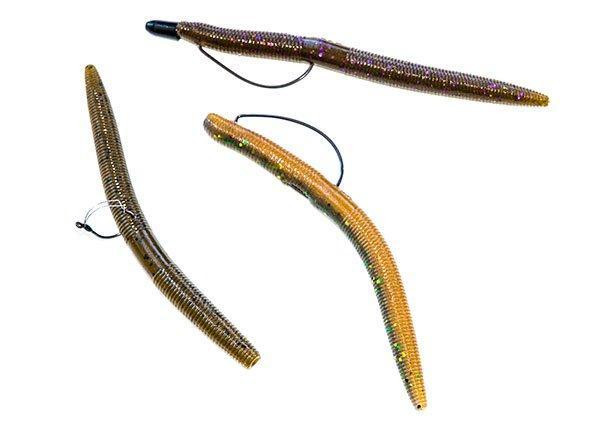
Spinnerbait : The two-spoon spinnerbait is an excellent choice in autumn. The vibrations and reflections produced by its slats attract the attention of smallmouth bass, increasing your probability of success.
Jerkbait fish : Swimming fish, such as jerkbaits, are ideal lures for locating bass. Their erratic movement imitates a fish in distress, provoking curiosity and attack from the bass.
Swimbait : Swimbaits reproduce the appearance and movement of a fish, making them attractive to bass in autumn. Several models are available, so choose the one that best suits your fishing environment.
Chatterbait Chatterbaits combine the vibrating action of a spinnerbait with the silhouette of a jig, providing an effective lure for attracting bass in autumn.
Soft plastic worm : Soft plastic worms, such as Berkley's Nedy Worm or Flat Worm, are attractive options for bass fishing. Their texture and subtle movements are particularly irresistible to these fish.
Various lures can be effective for bass fishing in autumn. It's important to adapt your selection of lures according to fishing conditions and fish behaviour. Experiment with these lures to increase your chances of success on your fishing trips.
The Impact of Wind on Fall Bass Fishing
Wind plays a crucial role in fall bass fishing.
At this time of year, weather conditions can vary considerably, influencing fish behavior.
By being aware of the impact of wind, anglers can adapt their methods to maximize their chances of success.
Firstly, it's important to understand that wind can concentrate plankton and other organisms on which baitfish feed, such as fry. When the wind blows, these organisms are pushed against the shallows, causing baitfish to congregate. As a result, bass move closer to windy areas to take advantage of this abundance of food.
Fishermen can therefore take advantage of these conditions by positioning themselves upstream of shallow windy areas.
Bass tend to be most active on cloudy, windy days. The absence of direct sunlight reduces their fear of exposure and encourages their hunting behaviour. Anglers can exploit these conditions by using "seeker" lures such as crankbaitswhich allow you to cover a large area of water quickly to find and attract active bass.

Wind direction can also influence the choice of fishing areas. Winds from the north can bring cold air, reducing bass activity. It may then be wise to concentrate on areas less exposed to the wind to find more active bass in slightly warmer waters.
In short, taking into account the impact of wind on bass fishing in autumn allows anglers to adapt their techniques accordingly and thus increase their chances of success.
Fall Bass Fishing Techniques
Here are a few techniques and tips for successful fall bass fishing:
1. Use the drop shot: The drop shot rig is an effective technique for bass fishing in autumn.
With this method, you can present the lure slightly above the bottom where the bass is likely to be.
The drop shot also allows you to vary the depth of presentation of the lure with precision, which is essential in autumn as bass move in response to changing environmental conditions.
2. Try the Texan assembly: The Texan rig consists of threading the lure onto a curved hook camouflaged in the lure.
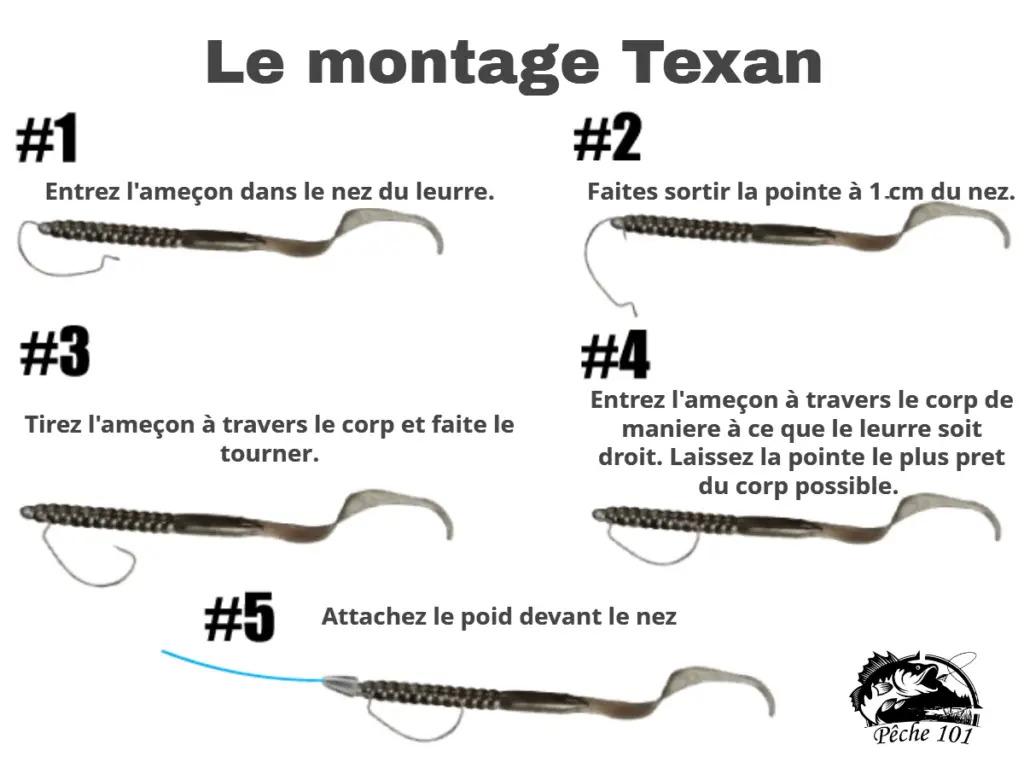
The Texan rig is ideal for bass fishing in autumn when fish hide in weeds or other obstacles.
This technique helps to reduce snagging and reach hard-to-reach areas where bass are found.
3. Adapt your lure: Bass can be more difficult to catch in autumn, as they tend to be selective about their food. It is therefore advisable to adapt the types of lures used, favouring those imitating natural prey.
Lures such as Buzzfrogs, which imitate frogs, and lures imitating small fish are often effective in attracting bass in autumn.
By following these techniques and tips, you'll increase your chances of successful fall bass fishing. The key is to carefully observe fish behaviour and adapt your fishing methods accordingly.
Understanding Fall Bass Behavior
Largemouth bass and smallmouth bass show different behaviours in autumn.
During this period, both species prepare for winter by actively searching for food to increase their fat reserves. They therefore become more voracious and less selective, giving fishermen a better chance of catching them.
In early autumn, largemouth bass generally congregate in shallow areas, near grass beds and large rocks. These areas are rich in food and offer good protection against predators.
Smallmouth bass, on the other hand, prefer areas with sand, gravel and small rocks, close to potential shelter such as rocks or submerged logs.
Bass feeding habits are also changing. They seek more accessible prey and take less time between meals. Anglers must therefore adapt their techniques to take advantage of these behavioural changes. Exploring different fishing techniques and using a variety of lures can help increase the success of fall bass fishing.
Choosing the Right Bass Fishing Equipment
To fish for bass in autumn, it's important to choose the right equipment to optimize your chances of success. Here are a few key elements to consider when selecting your fishing equipment.
Fishing rod : Choose a light casting rod of about 6'6" to 7', with medium power. This rod size offers good sensitivity and allows you to cast lures effectively to reach areas where bass are found.
Reel : A light casting reel is recommended for fall bass fishing. Make sure it has enough capacity to hold about 100 to 150 metres of fishing line.
Fishing line : Use 20-pound braided fishing line for abrasion resistance, sensitivity and reel space savings. For leaders, opt for fluorocarbon line capable of supporting 10 to 20 pounds for greater discretion in the water.
Lures and baitfish: In autumn, bass are generally more active and looking for food to prepare for winter. Vary the types of lures you use, trying surface lures, jigs, spinnerbaits, crankbaits and baitfish.
Flies : If you prefer to use a fly rod for bass fishing, choose flies that imitate the insects, crustaceans and small fish that bass might find in their natural habitat. Streamers, poppers and fin flies are popular choices for fall bass fishing.
Where to Fish for Largemouth Bass and Smallmouth Bass in Autumn
Autumn is an ideal time to fish for largemouth bass (Micropterus salmoides) and smallmouth bass (Micropterus dolomieu). These two fish species are widespread and popular with anglers in Quebec and Ontario.
Largemouth bass are mainly found in small lakes and bays, preferring warm, shallow, vegetation-rich waters.
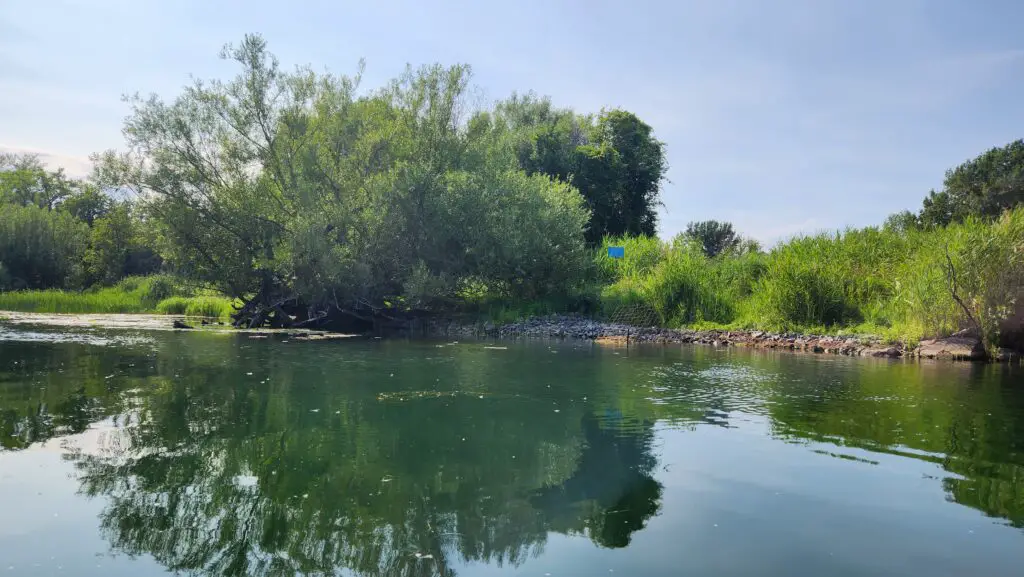
Quebec regions such as Lanaudière are popular fishing grounds for this species.
In Ontario, it is often found in the lakes of the Canadian Shield and along the U.S. border.
As for smallmouth bass, it is generally present in a greater number of locations than largemouth bass.
Anglers can find it in southern Quebec, as well as in many Ontario lakes and rivers.
However, it is absent from the waters of Côte-Nord and Gaspésie, and from Lac Saint-Jean in Quebec.
In autumn, both bass species move quietly into deeper water and seek out areas with underwater structures, such as rocks, tree stumps or seagrass beds. It is therefore advisable to concentrate on these areas to increase the chances of success.
Crankbaits, spinnerbaits and jigs are particularly effective at this time of year, but you can also use soft lures such as worms or tubes.
It is important to mention that, in order to legally fish for largemouth bass and smallmouth bass, anglers must possess the following licenses appropriate fishing licenses in Quebec and Ontario. These permits can be obtained from the appropriate authorities, such as Fisheries and Oceans Canada.
Bass Fishing Fall Versus Winter
Bass fishing in autumn and winter presents unique challenges and opportunities for sport fishermen.
In autumn, bass adopt a different strategy, congregating mainly on shoals, near seagrass beds and large rocks in shallow water.
This is due to the fact that baitfish and largemouth bass increasingly hang around rocky areas, which retain the sun's heat.
Conversely, in winter, bass fishing becomes more complicated due to weather conditions and ice formation on bodies of water.
Lower temperatures and shorter daylight hours affect bass feeding habits. They reduce their metabolism and become less active in winter.
Consequently, anglers have to adapt their techniques to catch bass in winter.
Autumn fishing is generally more electrifying, with vigorous battles fought by these courageous fish.
The best times to fish for bass in autumn are early morning, between 5:30 and 8:30. Fish generally prefer baits such as minnows or minnow imitations.
Bass fishing in autumn and winter offers distinct experiences for sport anglers. Weather conditions, fish behaviour and techniques vary considerably between these two seasons.
To maximize their chances of success, anglers need to adapt their strategies and equipment to the specifics of each season.
Autumn Bass Fishing: The Role of Structure and Vegetation
In autumn, structure and vegetation play an important role in bass fishing. Fish gather around these elements to feed and protect themselves.
Structures
Visit structures such as rocks, shoals and fallen trees provide natural shelter for bass.
By positioning themselves near these structures, anglers increase their chances of catching fish.
Rocks and shoals serve as resting areas for bass as they move into shallow waters to feed.
Fallen trees, meanwhile, attract bass prey and provide a suitable hunting environment.
Vegetation
Visit vegetation also has an impact on fall bass fishing.
Seagrass beds, for example, are ideal places for fish to hide and hunt.
Anglers should take into account the presence of seagrass beds when choosing a fishing site.
Using appropriate lures to penetrate vegetation can increase the chances of success.
In addition, aquatic vegetation creates shaded areas where bass rest and watch for prey.
In short, structure and vegetation play a crucial role in fall bass fishing.
Anglers need to take these factors into account when choosing a fishing site and adapting their techniques.
By focusing on rocks, shoals, fallen trees and grassy areas, anglers increase their chances of success when bass fishing in autumn.
Frequently asked questions
What are the best techniques for catching bass in autumn?
In autumn, bass congregate mainly on shoals, near grass beds and large rocks in shallow water. To catch them, use techniques such as light casting, bait caster or fly fishing.
Which lures work best for bass in autumn?
In autumn, bass look for more food to prepare for winter. The most effective lures are those that mimic natural prey, such as swimming fish, frogs, crustaceans and earthworms.
Where to find fall bass fishing?
In autumn, largemouth bass are commonly found in shallow warm-water areas with adequate cover, such as fertile bays, flats and shorelines.
Look for areas with vegetation and structure, such as seagrass beds or rocks.
How to adapt your fishing strategy for autumn?
To adapt your fall fishing strategy, be prepared to change lures and approach according to weather conditions and fish habits. Fish more slowly and with more natural movements, as fish become more lethargic as water temperatures drop.
What's the best time of day to fish for bass in autumn?
Visit best time to fish Bass fishing in autumn is usually early morning or late evening, when the fish are more active and feeding. However, warmer, sunnier days can also offer good fishing opportunities.
What are the signs of a good fall fishing area?
Signs of a good fishing area include shallow water with grass beds, vegetation, submerged branches, rocks or artificial structures. Also, look for areas where birds or small fish are present, as this usually indicates the presence of bass.
